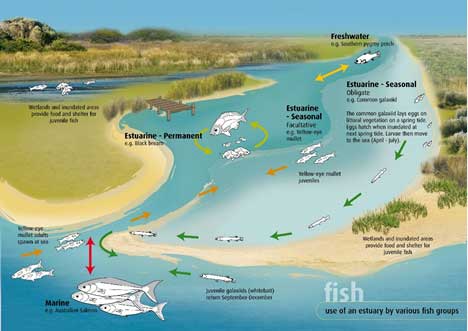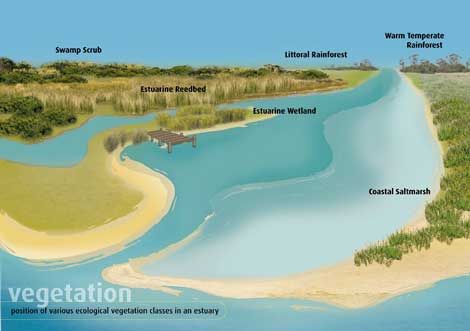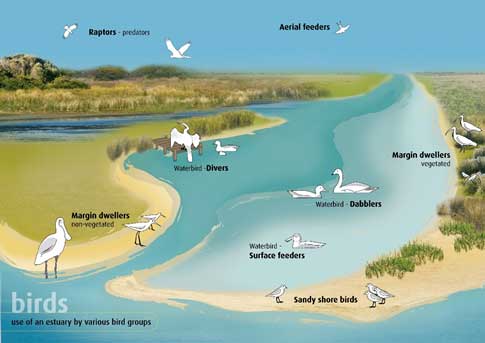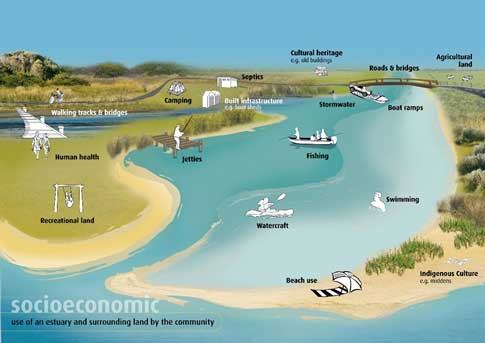Victoria’s estuaries
Estuaries are semi-enclosed bodies of water where salt water from the sea mixes with freshwater flowing from the land. Estuaries are dependent on both sources of water to provide a healthy environment. Estuaries are diverse in their physical form as they are in their state of health. However, they all share the distinction of being highly valued by the small communities living alongside them.
Over 120 rivers, streams and creeks enter the sea along Victoria’s coastline including those that run into major embayments like Port Phillip Bay, Western Port Bay and Corner Inlet, as well as riverine sub estuaries of the Gippsland Lakes, Victoria’s largest estuary.
Victoria’s estuaries include systems that are permanently open to the sea or close intermittently as a result of sand bar formation at the estuary entrance. This usually occurs during periods of low freshwater flow. Intermittently closed estuary entrances are a natural feature of the Victorian coastline and can be critical to the ecology and physical form of estuaries. Victoria’s estuaries, particularly those that are intermittently closed can be highly variable environments changing with tides, sea state, rainfall and wind patterns. Salinities in estuaries can vary from fresh to saltier than the sea.
Estuary values
Estuaries in Victoria are highly valued for their social, environmental and economic characteristics. Estuary managers must carefully balance their management activities to ensure the most beneficial outcomes are achieved for the environmental, social and economic values. The decision of whether to open or not open an estuary mouth artificially must consider all three values . An example of this could be that artificially opening an estuary to protect agricultural land or roads from flooding by may adversely impact fish spawning if undertaken at a critical time in the year.
Environmental values

Fish use of an estuary by various fish groups Estuary Entrance Management Support System (EEMSS) Manual 2006

Vegetation position of various ecological vegetation classes in an estuary EEMSS Manual 2006

Bird use of estuary by various bird groups EEMSS Manual 2006
Socioeconomic values

Socioeconomic use of an estuary and surrounding land by the community EEMSS Manual 2006
Estuary threats
Common threats to Victoria’s estuaries include
- invasive flora and fauna
- acid sulphate soils
- changes in flows of freshwater
- modifications to entrances, beds and banks of estuaries
- built structures that alter the connectivity of a waterway
- climate change
- changes in land use
- pollution events (such as oil spills)
- high levels of sediment and nutrients
- unpermitted estuary entrance openings
To find out more about EstuaryWatch in your region please contact us.

